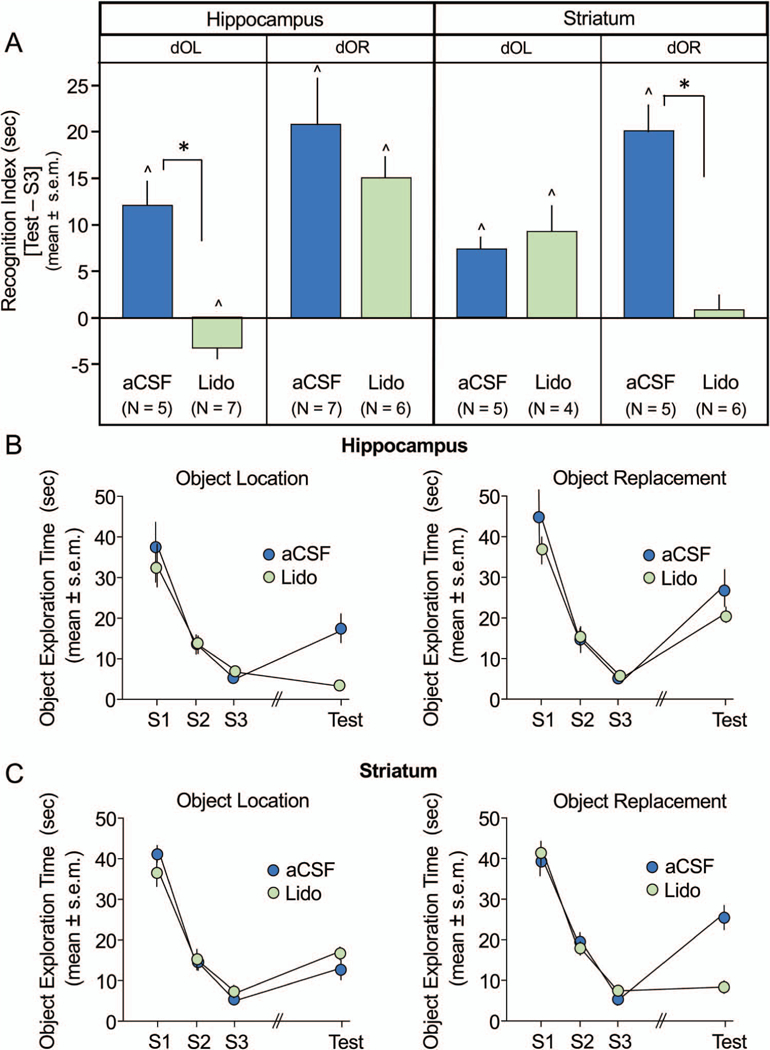Figure 2.

Effects of lidocaine (Lido) infusions into the hippocampus and striatum on double object location (dOL) and double object replacement (dOR) tasks. A: Recognition index scores reflecting difference in time exploring objects during test (T) and study session (S)3 (T-S3) show that compared to artificial cerebral spinal fluid (aCSF), Lido infusions into hippocampus impaired recognition for dOL but not dOR recognition (left panel), while infusions into the striatum impaired dOR but not dOL recognition (right panel). All rats treated with aCSF demonstrated significant recognition from S3. B: Time exploring both objects during S1, S2, S3, and test sessions following hippocampal infusions or striatal infusions (C). Object exploration curves reveal a decline in exploration across S1-S3. Rats that recognize change during test show increase in exploration compared to S3. * p < .0125 aCSF versus Lido; ^ p < .05 versus 0, within subjects. See the online article for the color version of this figure.
